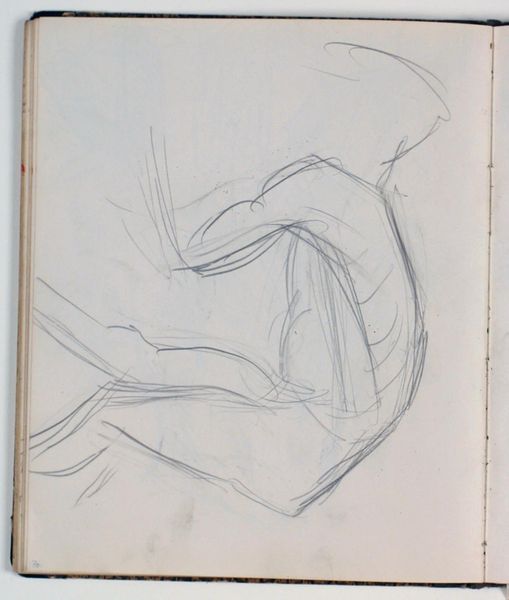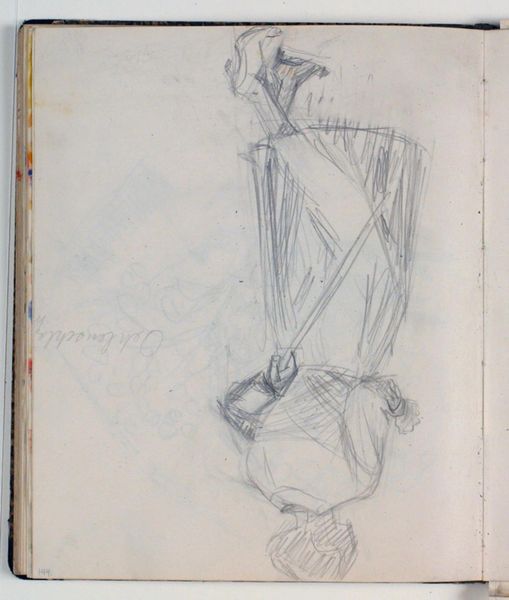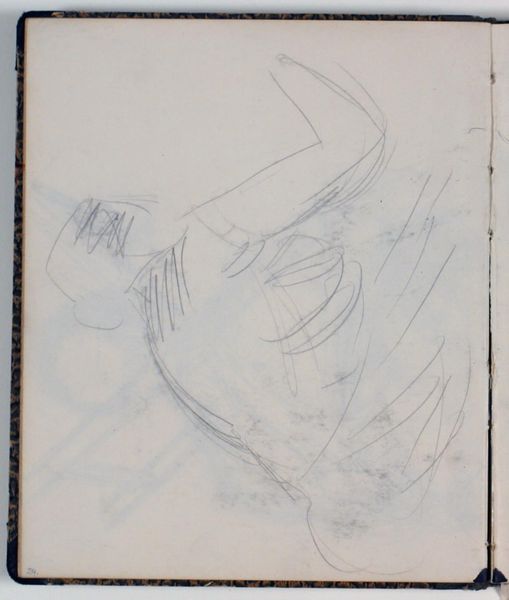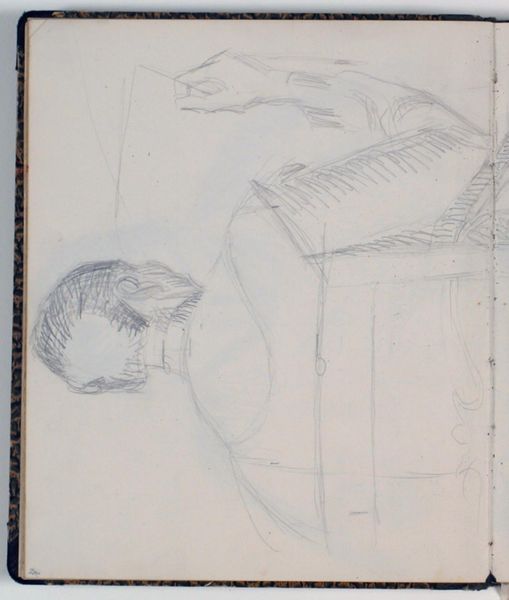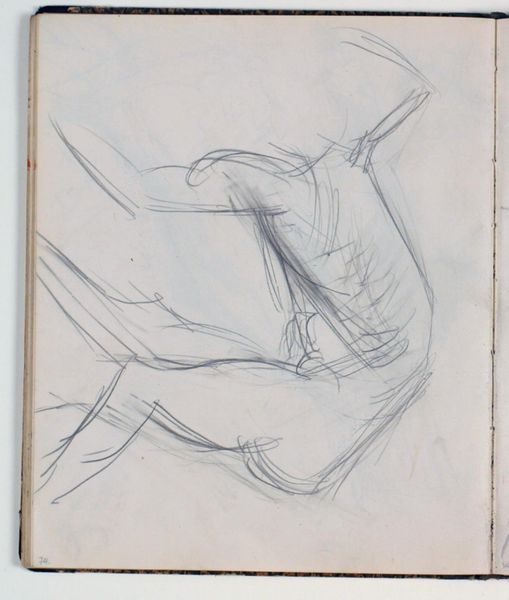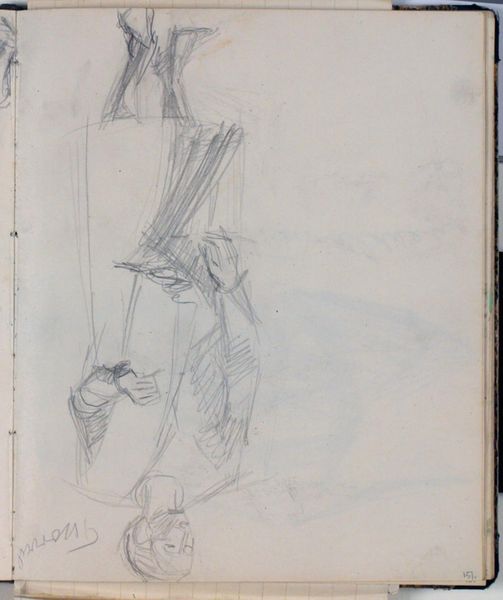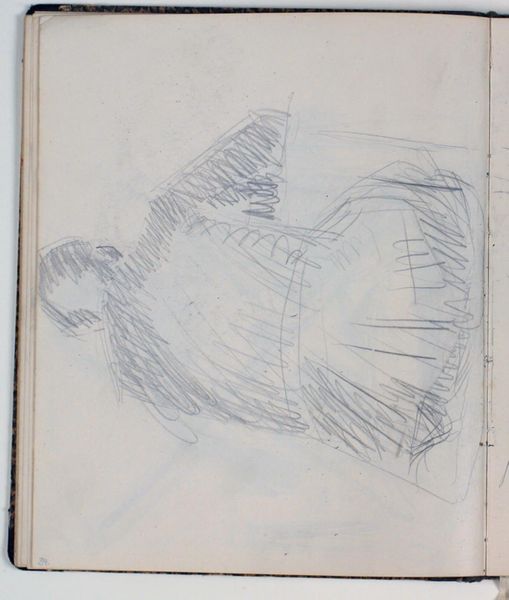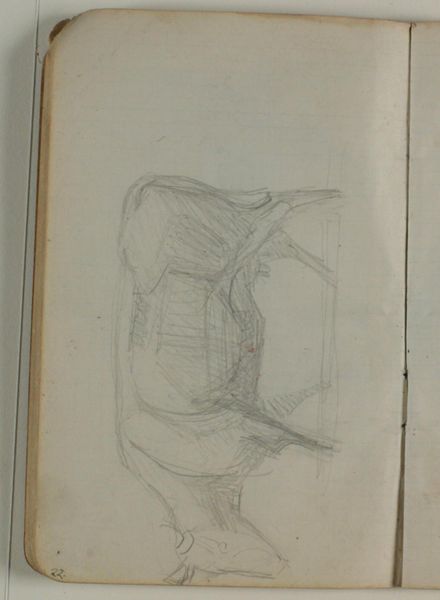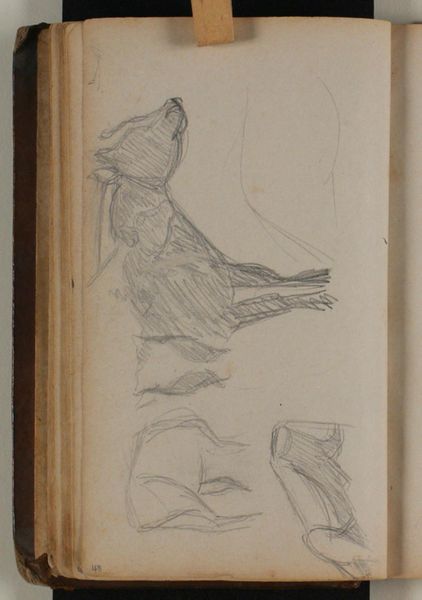
drawing, pencil
#
portrait
#
drawing
#
figuration
#
pencil
Dimensions: 226 mm (height) x 185 mm (width) x 112 mm (depth) (monteringsmaal), 221 mm (height) x 184 mm (width) (bladmaal)
Editor: This is "Studie af rygvendt siddende figur" – or "Study of a Figure Sitting with Their Back Turned" – a pencil drawing by Niels Larsen Stevns, made sometime between 1930 and 1936. It's gestural and somewhat melancholic. What do you see in this piece? Curator: I see an intimate, yet detached moment, reflecting on the cultural and historical backdrop of 1930s Europe. The figure’s averted gaze, literally and figuratively turning their back, raises questions of alienation. Think about the interwar period, the rise of fascism, and a general sense of disillusionment. Does the sketch perhaps represent the silent suffering of individuals within larger socio-political shifts? Editor: That’s a compelling reading. I was just thinking about it on a formal level – the lines, the sketchiness... I hadn't considered that wider context. Curator: And how does the artist's choice of such an intimate medium – pencil on paper – contribute to your initial perception? Doesn't that suggest a personal, perhaps even private, struggle? It's important to think how this relates to gendered aspects. Is the figure a woman, whose interiority is often deemed "private?" Does that alter our perspective? Editor: It could be anyone, really. But I see what you mean; it's easy to project feelings of being unseen or unheard onto a figure with its back turned. The figure becomes a kind of screen for reflecting on society’s treatment of the individual. Curator: Precisely! So, we have a portrait, but it isn’t just a portrait – it's a study of posture, loaded with meaning. We are forced to fill in the narrative based on social anxieties prevalent during the artist's time. Editor: I hadn't thought about art in connection to such things before; thank you for making me consider such notions! Curator: Absolutely, the intersections of art, gender, and the surrounding world, all are interconnected. Art allows us to confront pressing social questions.
Comments
No comments
Be the first to comment and join the conversation on the ultimate creative platform.
